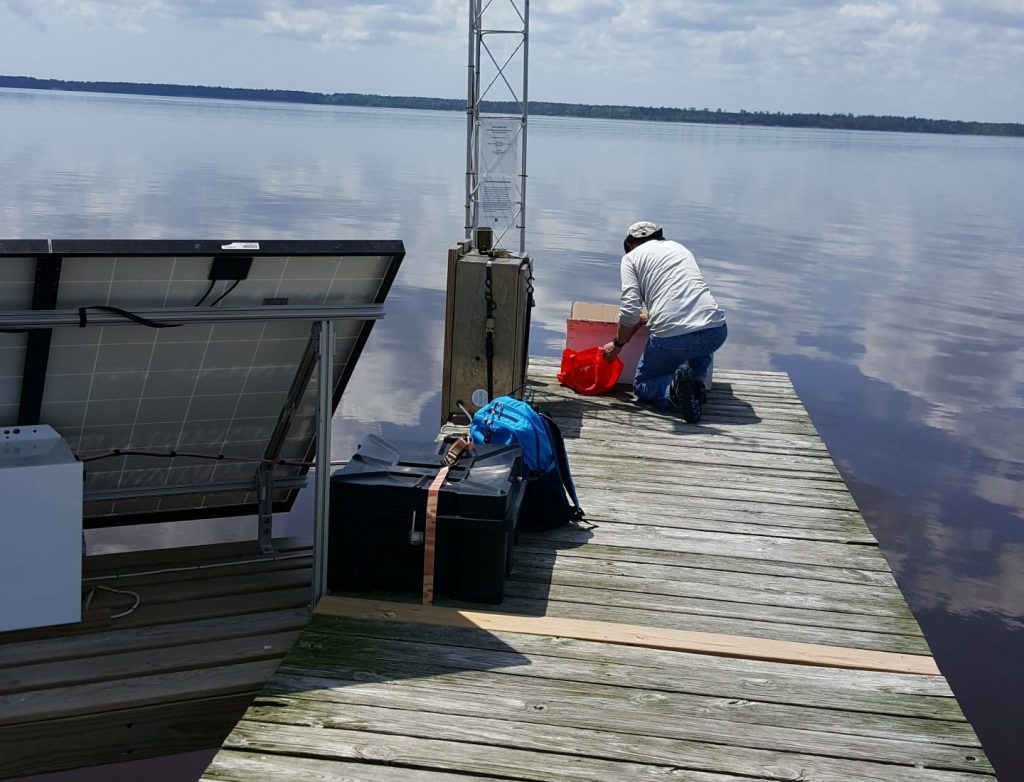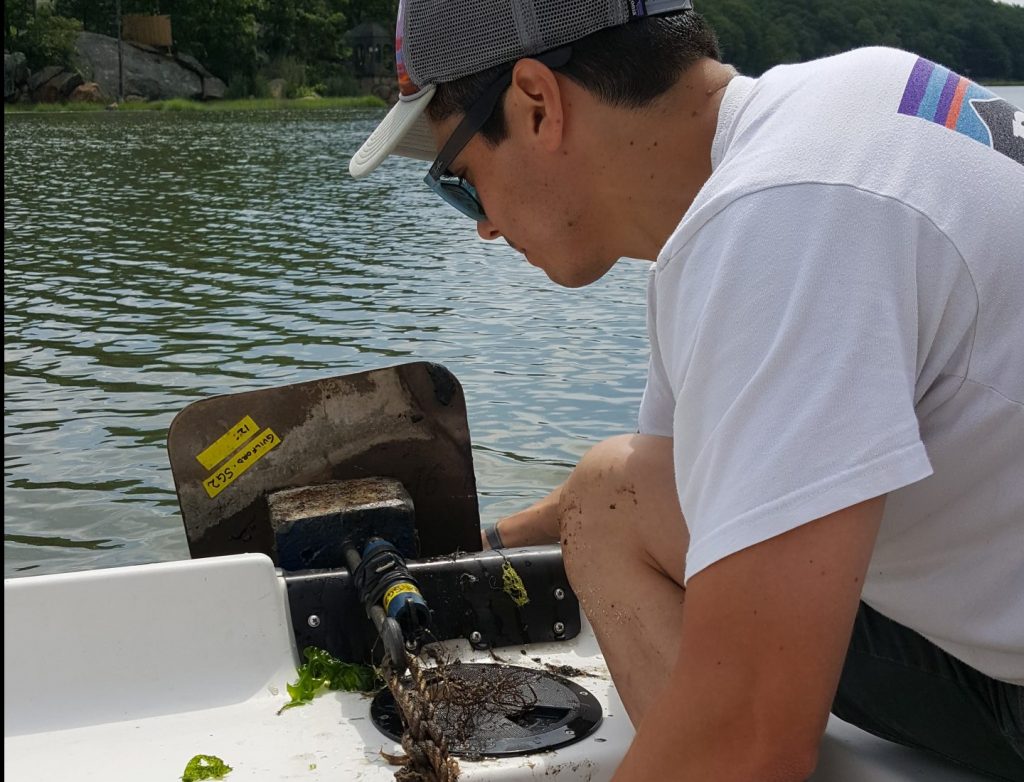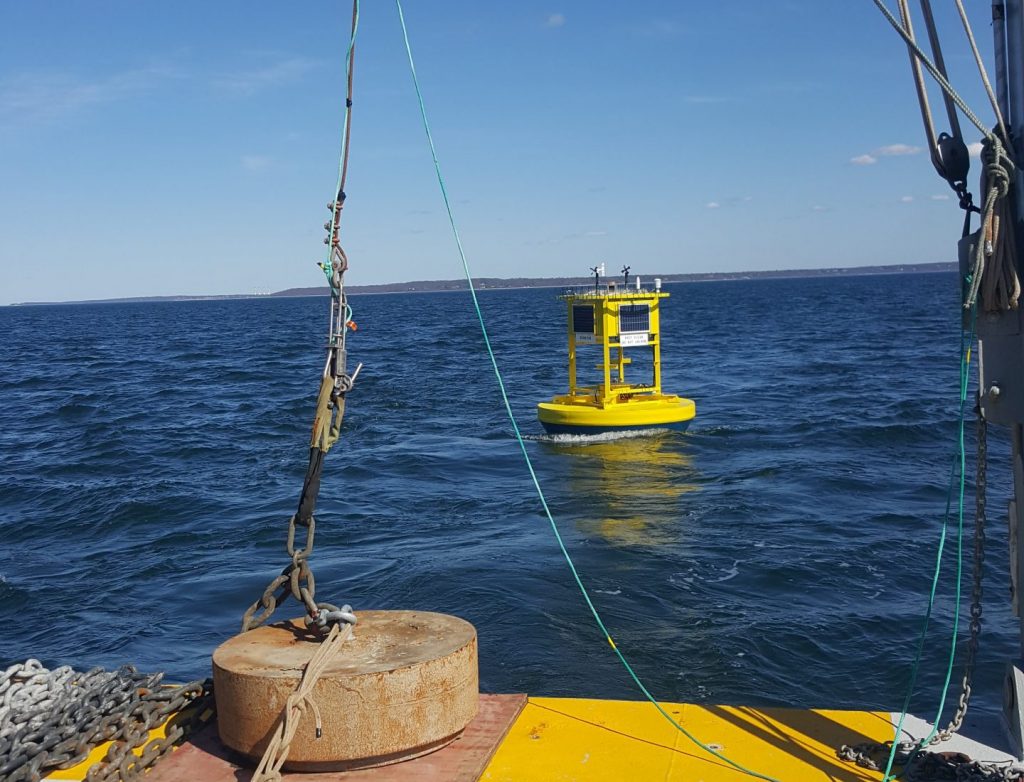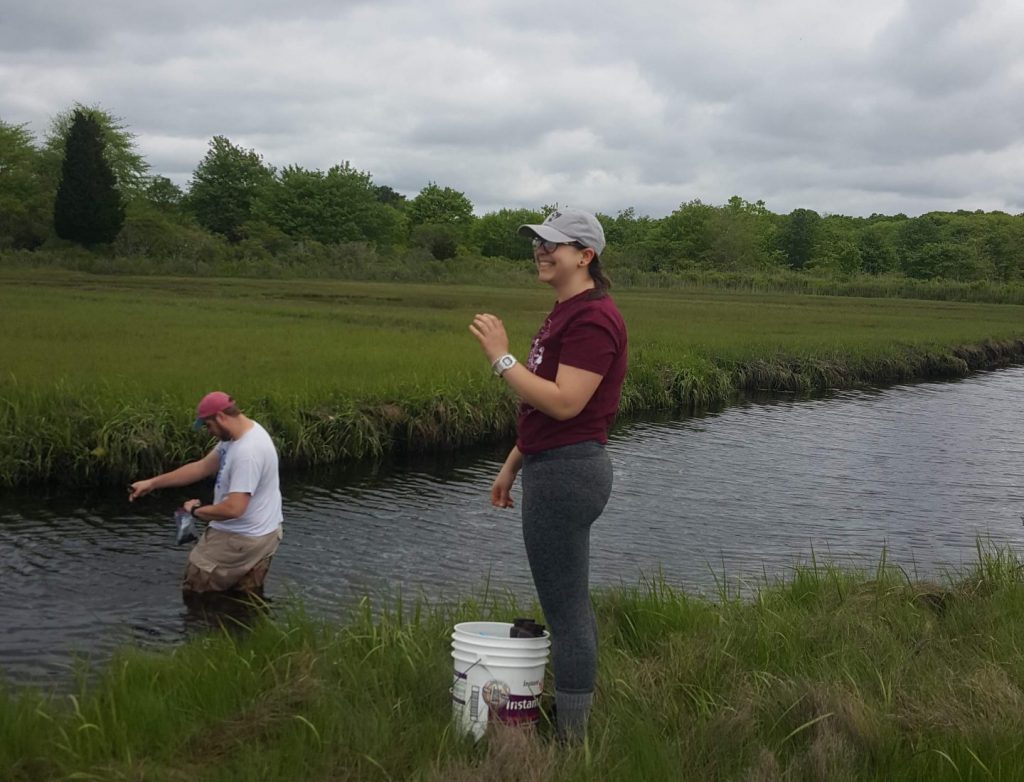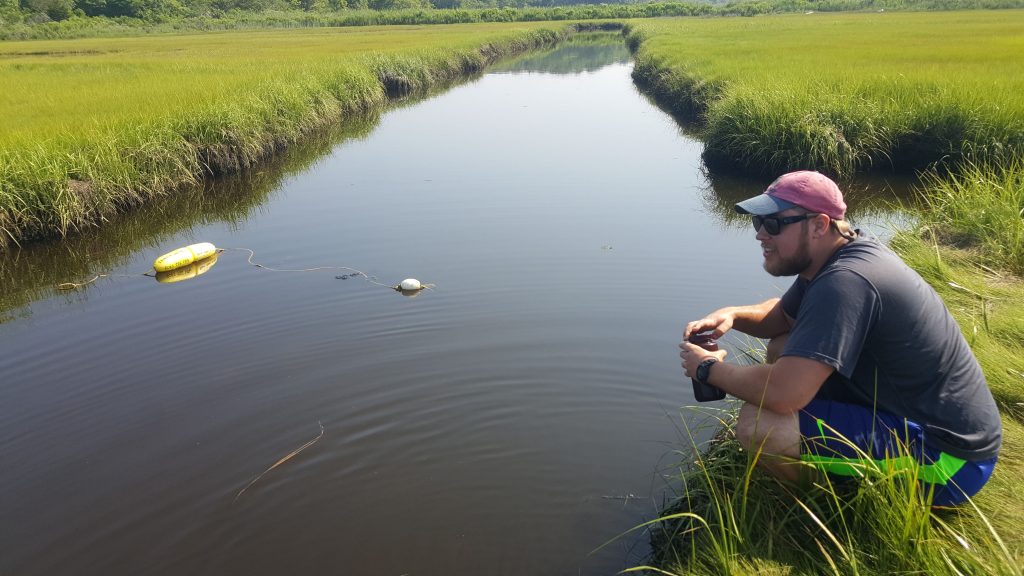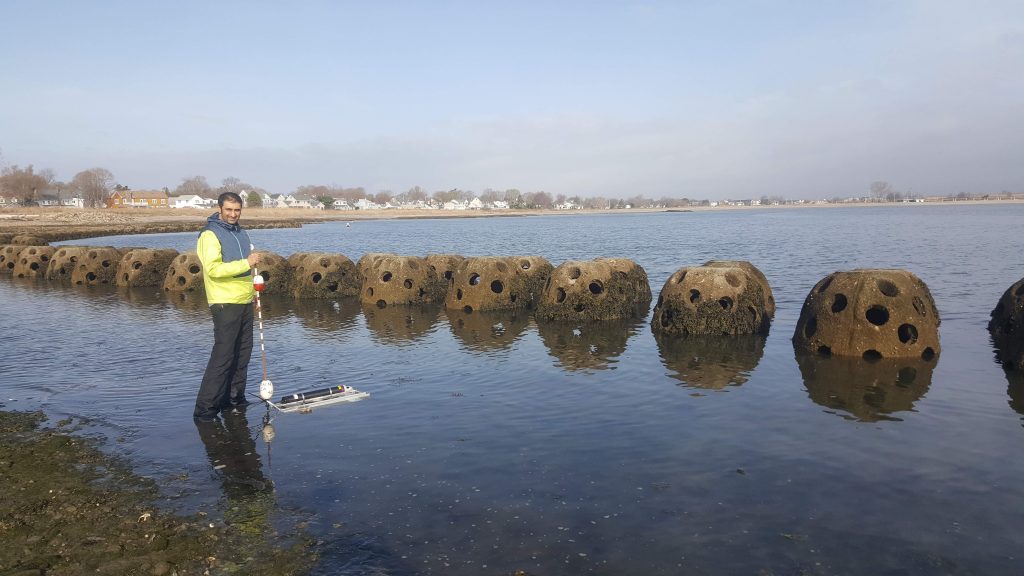
On the first floor of the Marine Sciences Building, it’s hard to miss the office door belonging to Kay Howard-Strobel because of its humorous sticker, “SAVE THE CRABS, THEN EAT ‘EM.” If you haven’t met Kay, you’ll probably be familiar with some the activities she’s been involved with at Avery Point.
Kay received her bachelors from the University of Mary Washington, where she majored in biology and geology. Then she completed her masters from the Virginia Institute of Marine Sciences (VIMS) in marine geology. Her thesis looked at Chesapeake Bay mud by using spatial autocorrelation to characterize dredge disposal sites in the Chesapeake Bay. “I found sand and mud was even way more fun than rocks and minerals,” she commented.
How Kay got to UConn is an interesting coincidence: “While at VIMS – one of my advisors hosted a visiting professor named Frank Bohlen,” she said. “After graduate school, I moved to Rhode Island with my husband and sent Frank a letter – and here I still am.” For 30 years, Kay has been a researcher in DMS, the first half working with Frank and second with Jim O’Donnell.
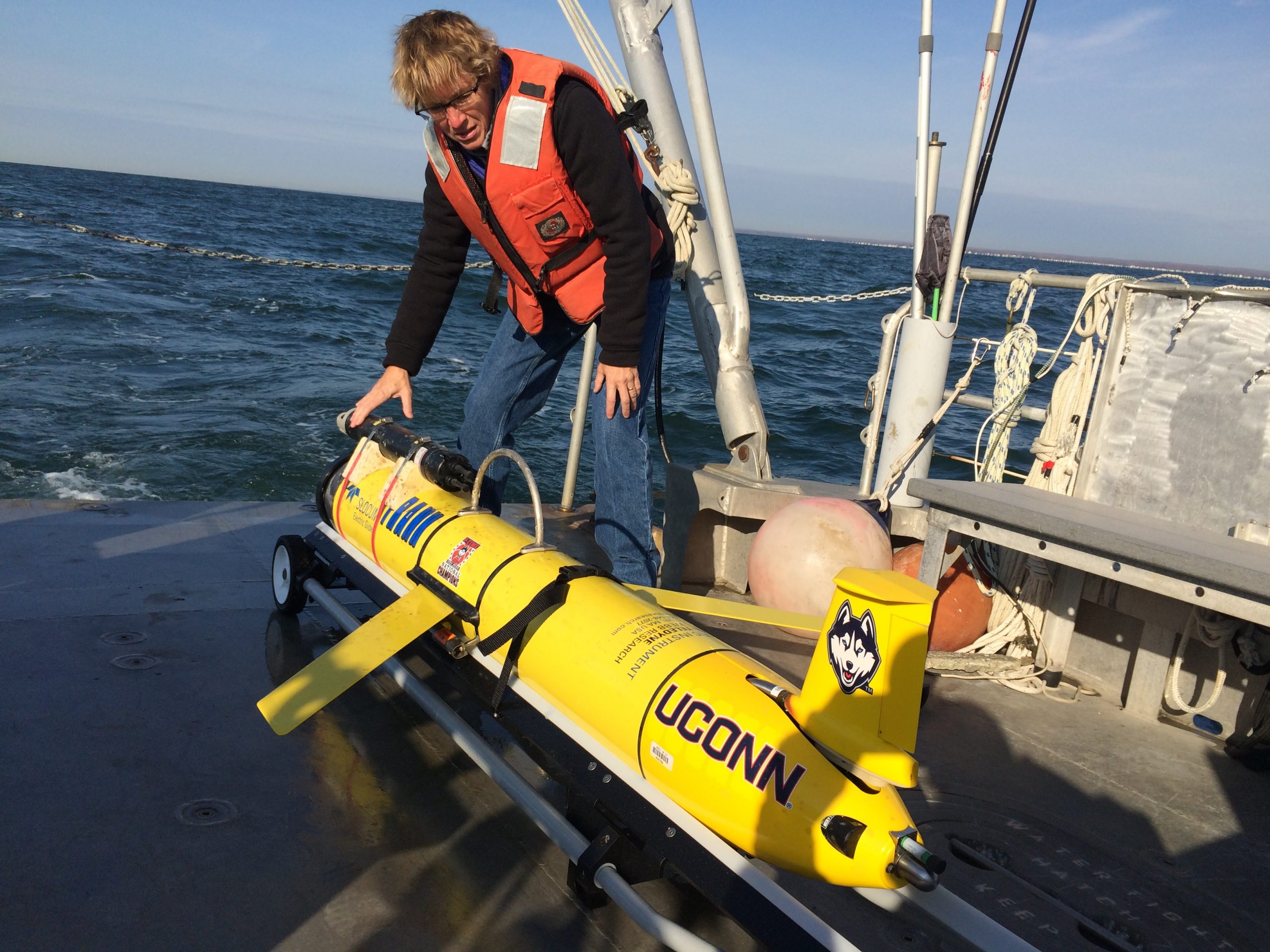 Currently, Kay manages, maintains, and configures various oceanographic instruments for field observations, including portable and mooring Acoustic Doppler Current Profilers (ADCPs), profiling and stationary Conductivity-Temperature-Depth (CTDs) sensors, suspended sediment sensors, Autonomous Underwater Vehicles (AUVs) and gliders, nutrient sensors, buoys, and more.
Currently, Kay manages, maintains, and configures various oceanographic instruments for field observations, including portable and mooring Acoustic Doppler Current Profilers (ADCPs), profiling and stationary Conductivity-Temperature-Depth (CTDs) sensors, suspended sediment sensors, Autonomous Underwater Vehicles (AUVs) and gliders, nutrient sensors, buoys, and more.
Kay deploys and recovers these sensors on all types of field campaigns too. Work in the field is very weather dependent and preparation constant, so she is ready to go on a moment’s notice. The variety of field work Kay has done is staggering. She said, “Every project is memorable in some way, shape or form… whether traipsing through marshes and walking amongst reef balls with graduate students, deploying buoys in western LIS off the R/V Connecticut at the crack o’ dawn, squeezing under bridges on the Maritime Skiff, riding flood-gate currents in a johnboat, or running CTD profiles down the Sound on a flat, calm summer day on the Osprey… they’re all good.”
Throughout her three decades at UConn, Kay has been a part of many significant observational projects. One in particular is the Long Island Sound Coastal Observatory, now know as the Long Island Sound Integrated Coastal Observing System (LISICOS). Initially, it started as a buoy in the Thames River that transmitted data in real-time back to Avery Point, which she and David Cohen developed. Now, LISICOS is an interdisciplinary network of buoys, radar, weather stations, and water quality measurements. Public, private, and state users have to come to rely on that data for recreation, policy, and monitoring
Kay also enjoys CrossFit and playing soccer. She is one of the longest standing, most valuable members of the Department’s Friday afternoon pick-up soccer games.
DMS is enriched by and fortunate to have Kay Howard-Strobel as an expert observationalist in our midst.
